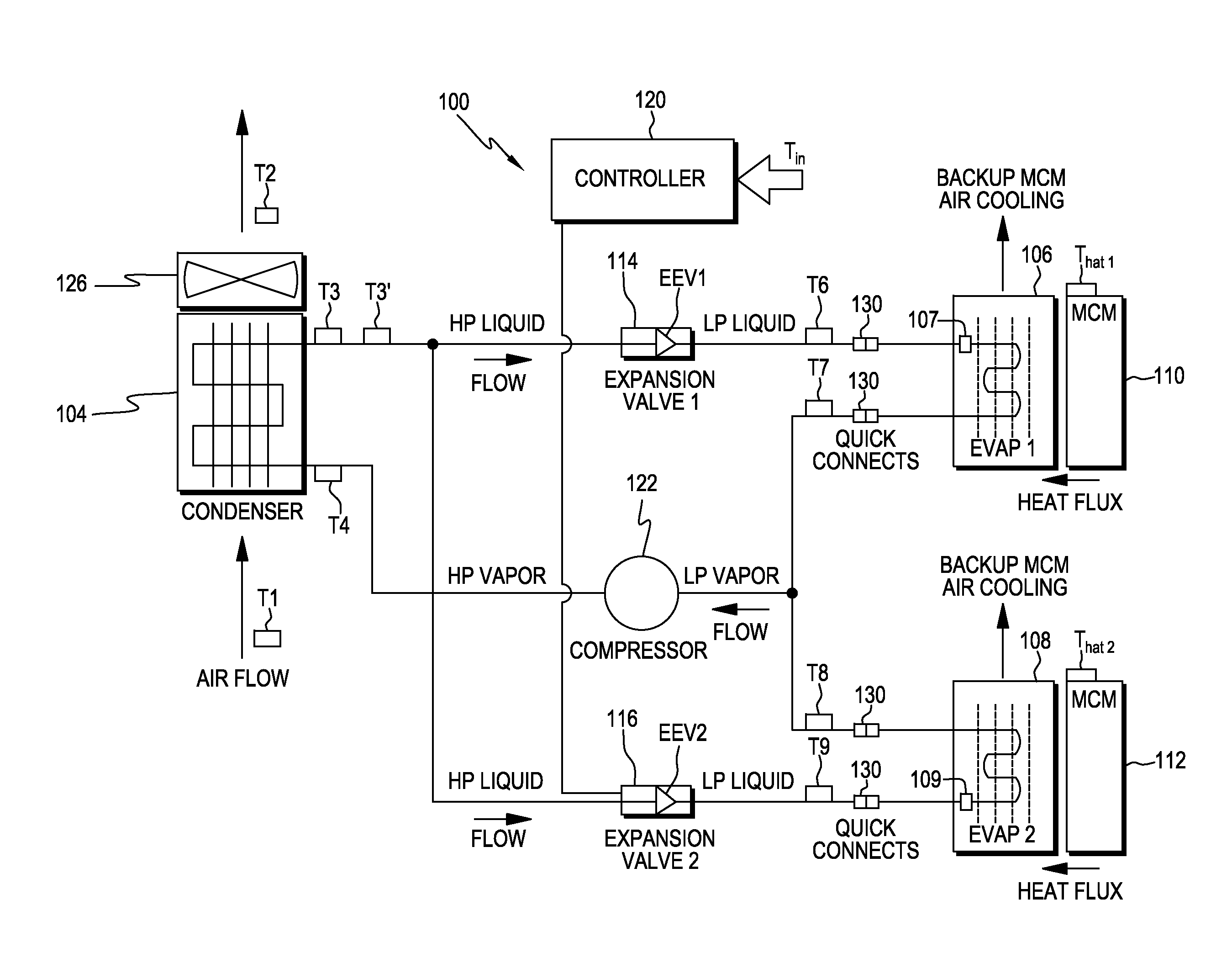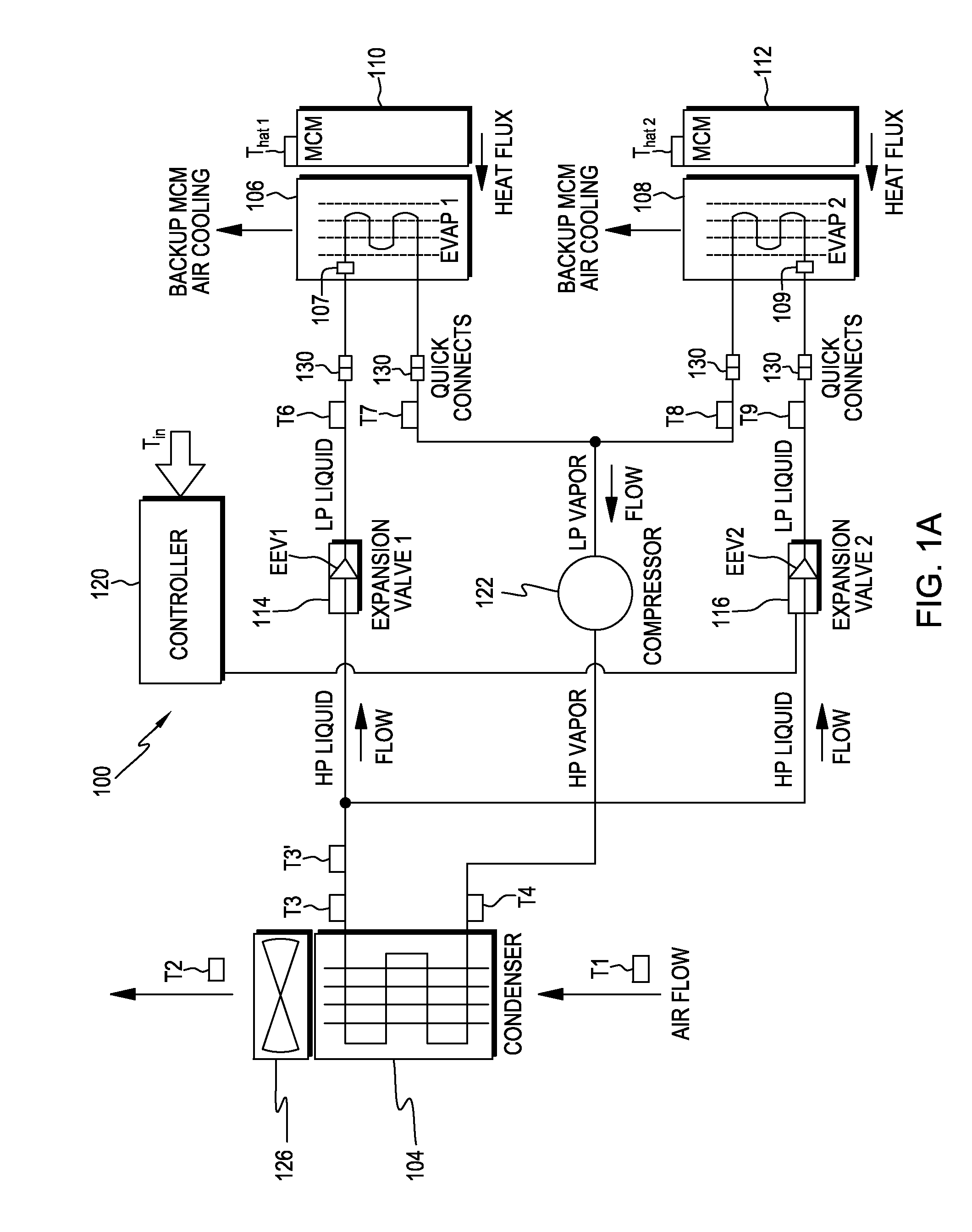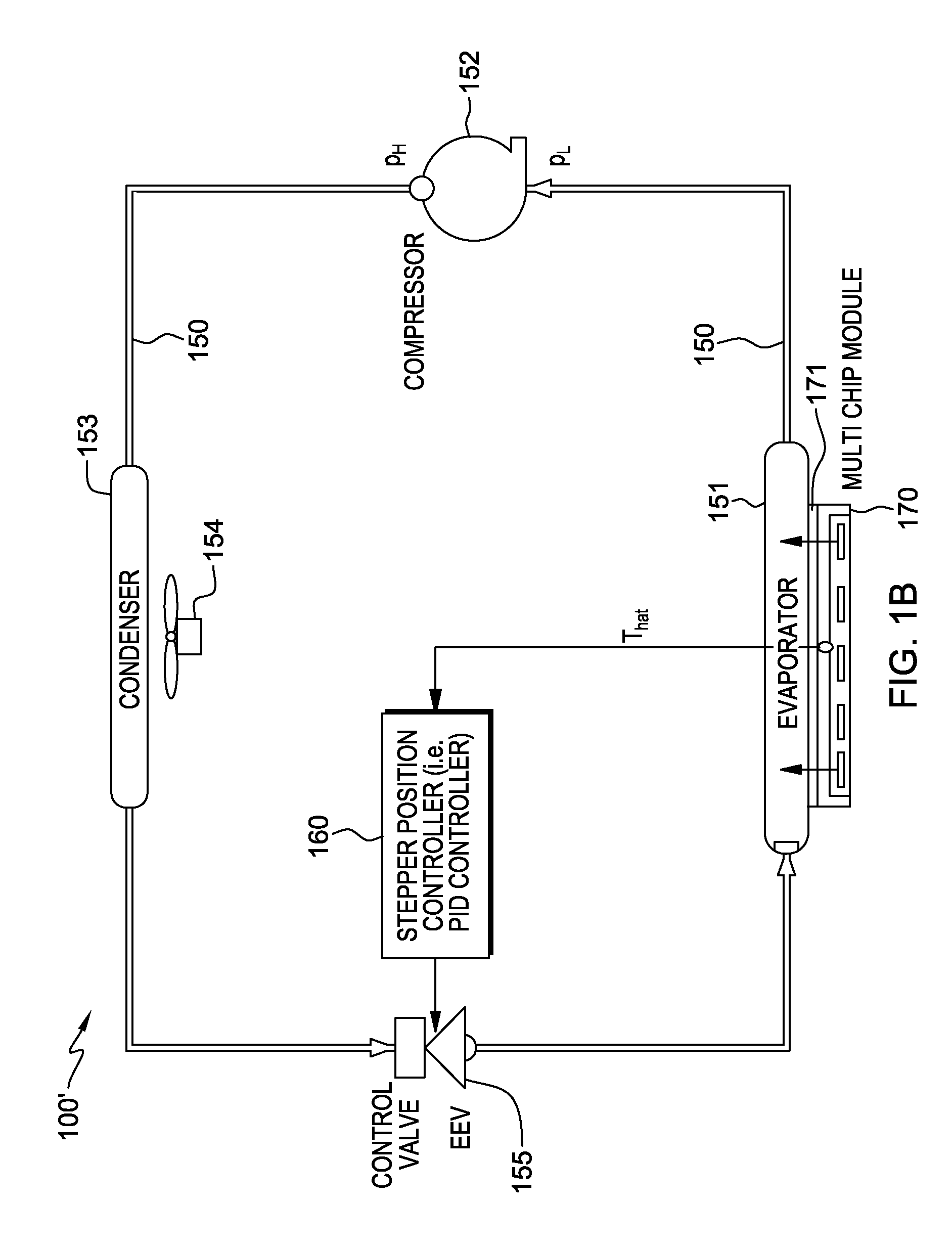Cooling system control and servicing based on time-based variation of an operational variable
a cooling system and operational variable technology, applied in the direction of domestic cooling apparatus, static/dynamic balance measurement, instruments, etc., can solve the problems of increasing device temperature, power dissipation, and therefore heat production, increasing,
- Summary
- Abstract
- Description
- Claims
- Application Information
AI Technical Summary
Benefits of technology
Problems solved by technology
Method used
Image
Examples
Embodiment Construction
[0023]As used herein, the term “electronics rack” includes any frame, rack, housing, blade server system, etc., having at least one heat generating electronic component of a computer system or electronic system, and may be, for example, a stand-alone computer processor having high, mid or low end processing capability. In one embodiment, an electronics rack may compromise multiple nodes or books, each having one or more heat-generating electronic components requiring cooling. Each “heat-generating electronic component” may comprise an electronic device, an electronic module, an integrated circuit chip, a multi-chip module, (comprising, for example, one or more processor chips), etc.
[0024]The word “refrigerant” is used herein to refer to any coolant which can be employed in a vapor compression / expansion system. One example of refrigerant within a cooling system in accordance with an aspect of the present invention is R-134A coolant (i.e., 1,1,1,2 tetrafluoroethane), however, the conc...
PUM
 Login to View More
Login to View More Abstract
Description
Claims
Application Information
 Login to View More
Login to View More - R&D
- Intellectual Property
- Life Sciences
- Materials
- Tech Scout
- Unparalleled Data Quality
- Higher Quality Content
- 60% Fewer Hallucinations
Browse by: Latest US Patents, China's latest patents, Technical Efficacy Thesaurus, Application Domain, Technology Topic, Popular Technical Reports.
© 2025 PatSnap. All rights reserved.Legal|Privacy policy|Modern Slavery Act Transparency Statement|Sitemap|About US| Contact US: help@patsnap.com



